Apple, Pear and Related Trees Disorder: Fire Blight
– Cultural
– Chemical
Resistant and Susceptible Varieties
Authors: P.S. McManus, M.F. Heimann
Rev: 2025, J. Dillon
Item number: A1616
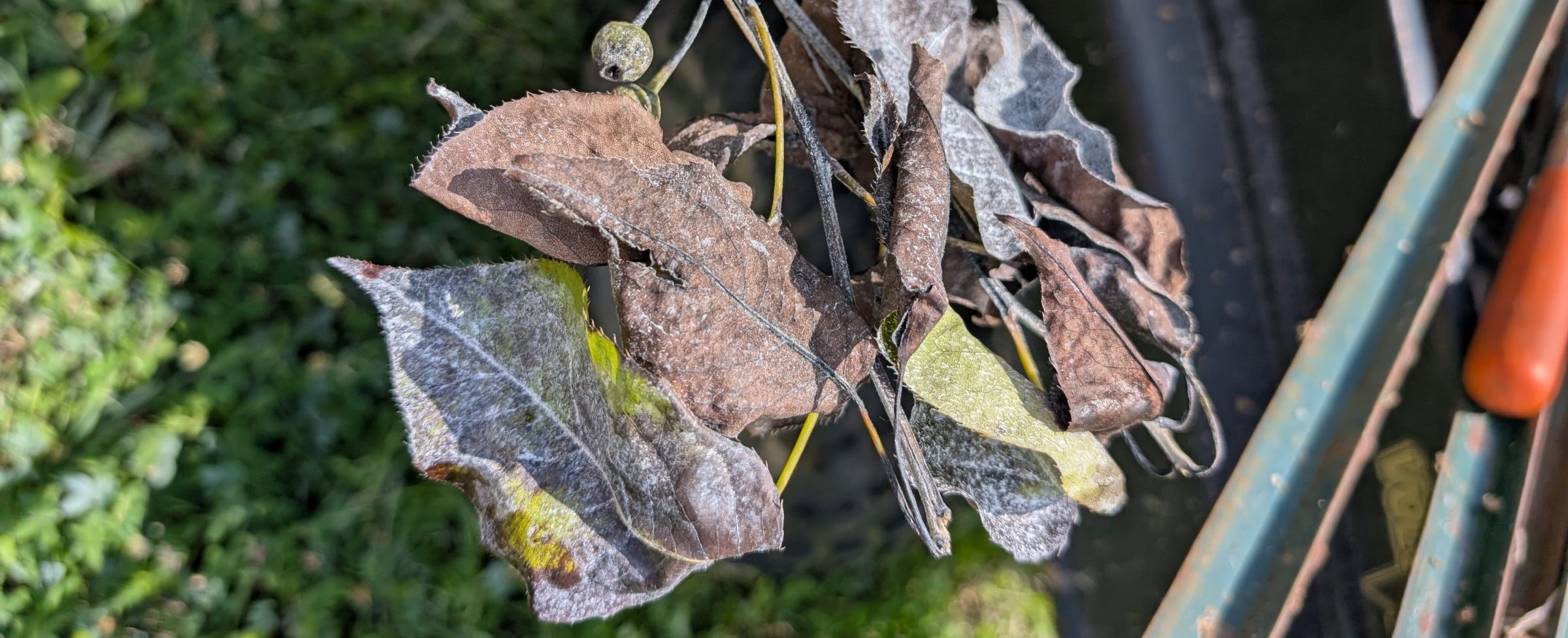
Introduction
Fire blight is a serious disease of apple, pear, raspberry, and some related ornamental plants including amelanchier (serviceberry), cotoneaster, crabapple, hawthorn, mountain ash, pyracantha (firethorn), and quince. Outbreaks of fire blight are sporadic, but when conditions are favorable, young trees can be lost to this devastating disease within a few weeks. Most fire blight research has focused on apple and pear, and the descriptions and recommendations in this article are based on these economically important crops. However, these management principles also apply to ornamental plants.
Symptoms and Effects of Fire Blight
All parts of the tree—flowers, fruits, leaves, young shoots, older branches, trunks, and roots—can show symptoms of fire blight. Infected blossoms appear limp, water-soaked or greasy, and dark green-gray. As petals fall from healthy blossoms, infected flowers turn dry and brown and remain attached to the tree.
Early symptoms on shoots include yellow-orange discoloration on the stem surface and wilting of young leaves near the shoot tips. Sometimes droplets of milky-white, orange, or brown ooze are visible on the shoots. Within a few weeks, the leaves turn dry and brown, and the shoot tips bend into the shape of a shepherd’s crook. Infected shoots on pear turn black as if scorched by fire.
If infected when young, fruit are small, shriveled, and brown. Later, fruit infections appear as small, blister-like spots with red halos. Eventually the entire fruit becomes brown and rotted. Fire blight can spread internally from blossoms and shoots to woody parts of the tree.
The bark of infected branches, trunks, and roots is darker than surrounding healthy tissue. Tissue under the bark is reddish and water-soaked at first, but later turns dry and brown. Slightly sunken cankers develop on branches and trunks. During the growing season, the margins of cankers are indefinite. During the winter, the margins are distinct and affected bark is often cracked.
What Causes Fire Blight
The bacterium that causes fire blight, Erwinia amylovora, overwinters at the margins of cankers. In the spring, ooze containing bacteria exudes from the cankers at about the same time the trees are blooming. The ooze is spread to blossoms by splashing rain and insects. The bacteria rapidly multiply on the blossoms when rain, fog, or high relative humidity (greater than 60%) accompanies temperatures above 65°F.
Bees spread bacteria from blossom to blossom. Infection occurs when rain or dew washes the bacteria to openings near the base of the flower. The bacteria can then move systemically throughout the plant to shoot tips and roots.
Wind-driven rain can also spread the bacteria. Sudden and severe outbreaks often occur about 5–10 days after hail or strong winds wound young, succulent tissue. Shoot infections can be numerous following a storm even if blighted blossoms were not apparent.
Shoot tips become early resistant to infection later in the season after they stop growing. Roots become infected when bacteria enter systemically through the trunk or through infected rootstock sprouts. Trees will often die if the roots become infected.
Controlling Fire Blight
Once established, fire blight is difficult to control and impossible to eradicate. Integration of good cultural and sanitary practices is the best means of preventing fire blight and managing the disease when it occurs. Well-timed application of chemicals to kill or inhibit bacteria is often necessary on susceptible cultivars.
Cultural Control
No cultivars or rootstocks are immune to fire blight, but several are relatively resistant. Severe outbreaks can be avoided by growing the more resistant cultivars and rootstocks. In particular, avoid combinations of highly susceptible rootstocks and cultivars. Plant trees on well-drained sites with soil pH of 5.5–6.5. Trees should be properly fertilized, but avoid excessive nitrogen, especially later than July 1 as this promotes the growth of succulent, highly susceptible tissue.
Remove overwintering bacteria by pruning out infected tissue during the dormant season; make cuts at least 4–6 inches below canker margins. During the growing season, inspect trees for symptoms at least once per week starting about a week after bloom through July. Remove infections with cuts at least 12 inches below visible symptoms. Disinfect pruning tools by soaking them in a solution of 1 part bleach plus 9 parts water for 30 seconds. If fire blight infections are so numerous that removing them all is impractical, wait until the tree is dormant to prune. Excessive pruning during the growing season can do more harm than good by promoting succulent growth and by directly transferring of the fire blight bacterium on tools.
Chemical Control
You can reduce the spread of bacteria in early spring by applying copper compounds when buds are showing 1⁄4 inch of green tissue. Copper applied later could damage young leaves and blossoms. Streptomycin is the most effective chemical for fire blight management. If the weather is favorable for fire blight development, spray streptomycin at 3- to 4-day intervals during bloom to inhibit bacterial growth and reduce blossom infection. After bloom, do not apply streptomycin except within 24 hours following a storm with hail or strong winds and rain. Do not apply streptomycin to actively oozing shoots—this is ineffective in controlling disease and could promote the development of streptomycin-resistant strains of the fire blight bacterium. For details on using chemicals to control fire blight, see Apple Pest Management for Home Gardeners (A2179).
References to products in this article are for your convenience and are not an endorsement of one product over other similar products. You are responsible for using chemicals according to the manufacturer’s current label directions. Follow directions exactly to protect the environment and people from chemical exposure.
Resistant and Susceptible Varieties
Relative resistance of apples, pears, and crabapples to fire blight.
Apples
| Resistant | Susceptible | Very Susceptible |
|---|---|---|
| Early McIntosh | Cortland | Burgundy |
| Empire | Earligold | Gala |
| Freedom | Fireside/Connell | Idared |
| Haralson | Golden Delicious | Jonagold |
| Jonafree | Honeygold | Jonathan |
| Liberty | Jerseymac | Lodi |
| Northern Spy | Jonamac | Northern Spy |
| Nova Easygro | Macfree | Paulared |
| Prima | Macoun | Rome Beauty |
| Priscilla | McIntosh | |
| Red Delicious | Mollies Delicious | |
| Stayman | Northwestern Greening | |
| Viking | Redfree | |
| William’s Pride | Regent | |
| Winesap | Spartan |
Apple Rootstocks
| Resistant | Susceptible | Very Susceptible |
|---|---|---|
| Geneva 30 | MM.106 | Bud.9 |
| Geneva 65 | MM.111 | M.26, M.27 |
| M.7 | Mark | |
| Novole | Ottawa 3 | |
| P.2, P.22 |
Pears and Asian Pears
| Resistant | Susceptible | Very Susceptible |
|---|---|---|
| Harrow Delight | Chojuro | Bartlett |
| Harrow Sweet | Harvest Queen | Bosc |
| Magness | Lucious | Clapp’s Favorite |
| Moonglow | New Century | d’Anjou |
| Spartlett | Flemish Beauty | |
| Highland |
Pear Rootstocks
| Resistant | Susceptible | Very Susceptible |
|---|---|---|
| Old Home | Bartlett seedlings | |
| OH x Farmingdale |
Crabapples
| Resistant | Susceptible | Very Susceptible |
|---|---|---|
| Centennial | Dolgo | Snowdrift |
| Profusion | Harvest Gold | Silver Moon |
| Whitney | Red Splendor | Transcendent |
| White Candle |

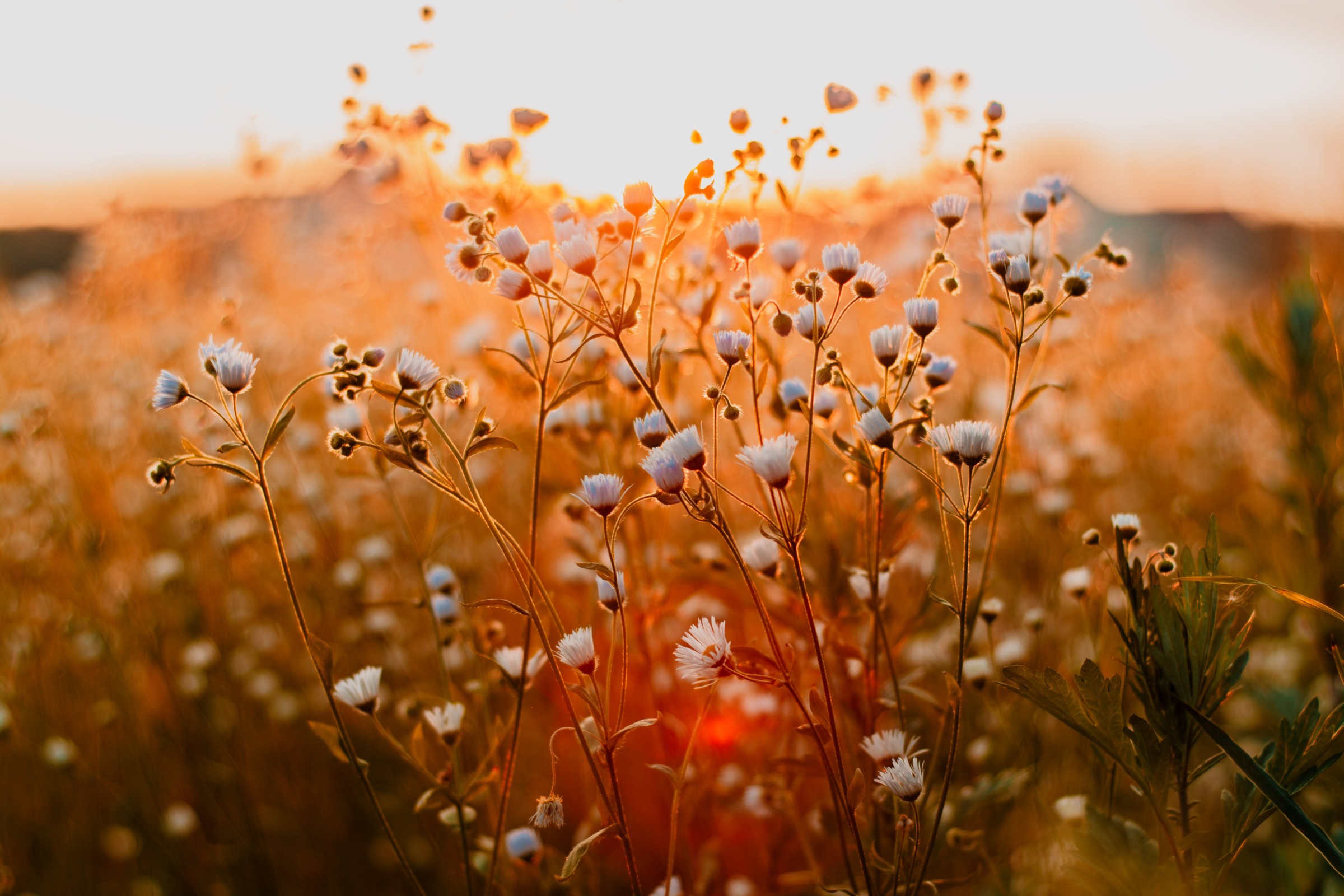
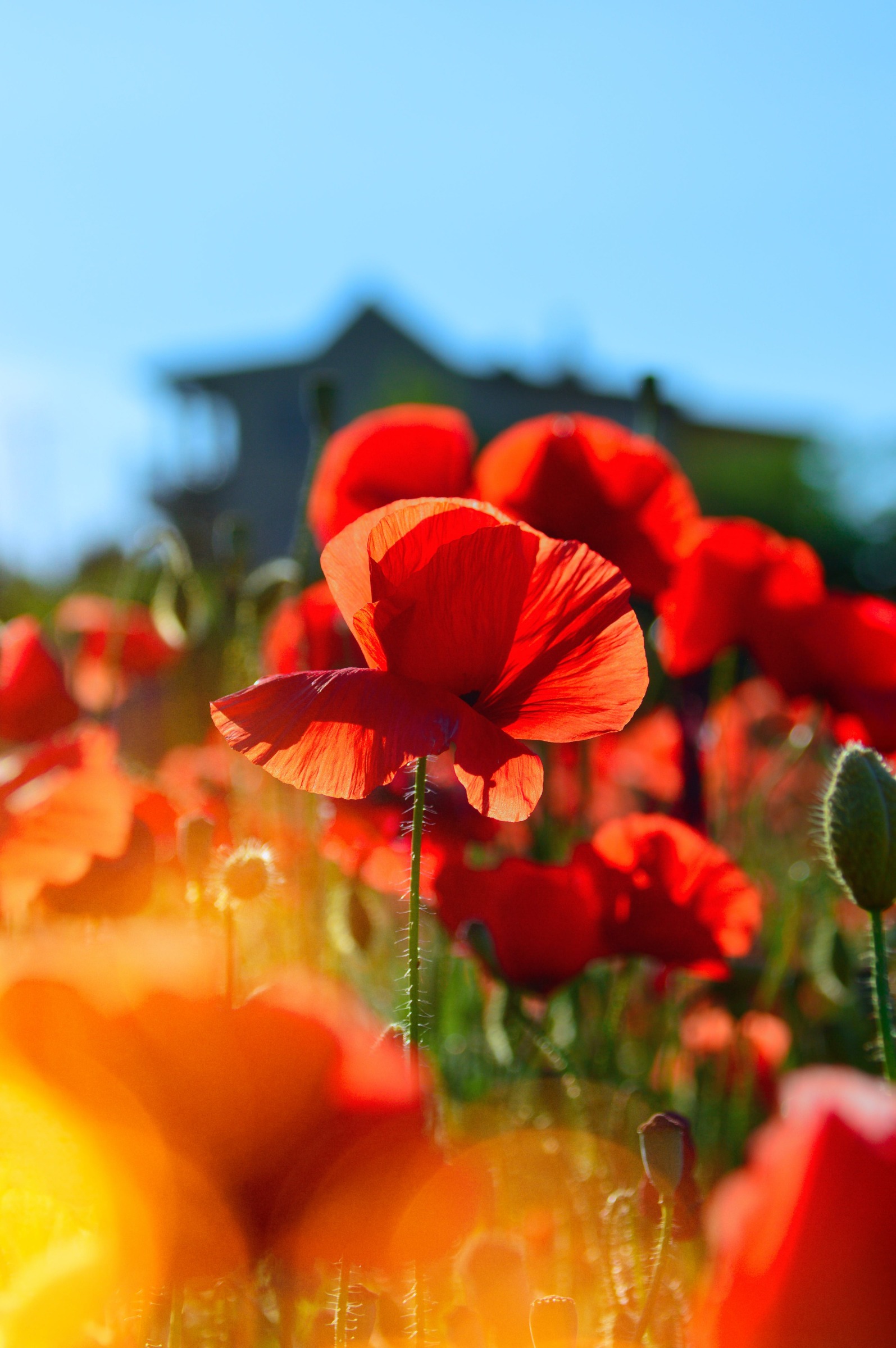
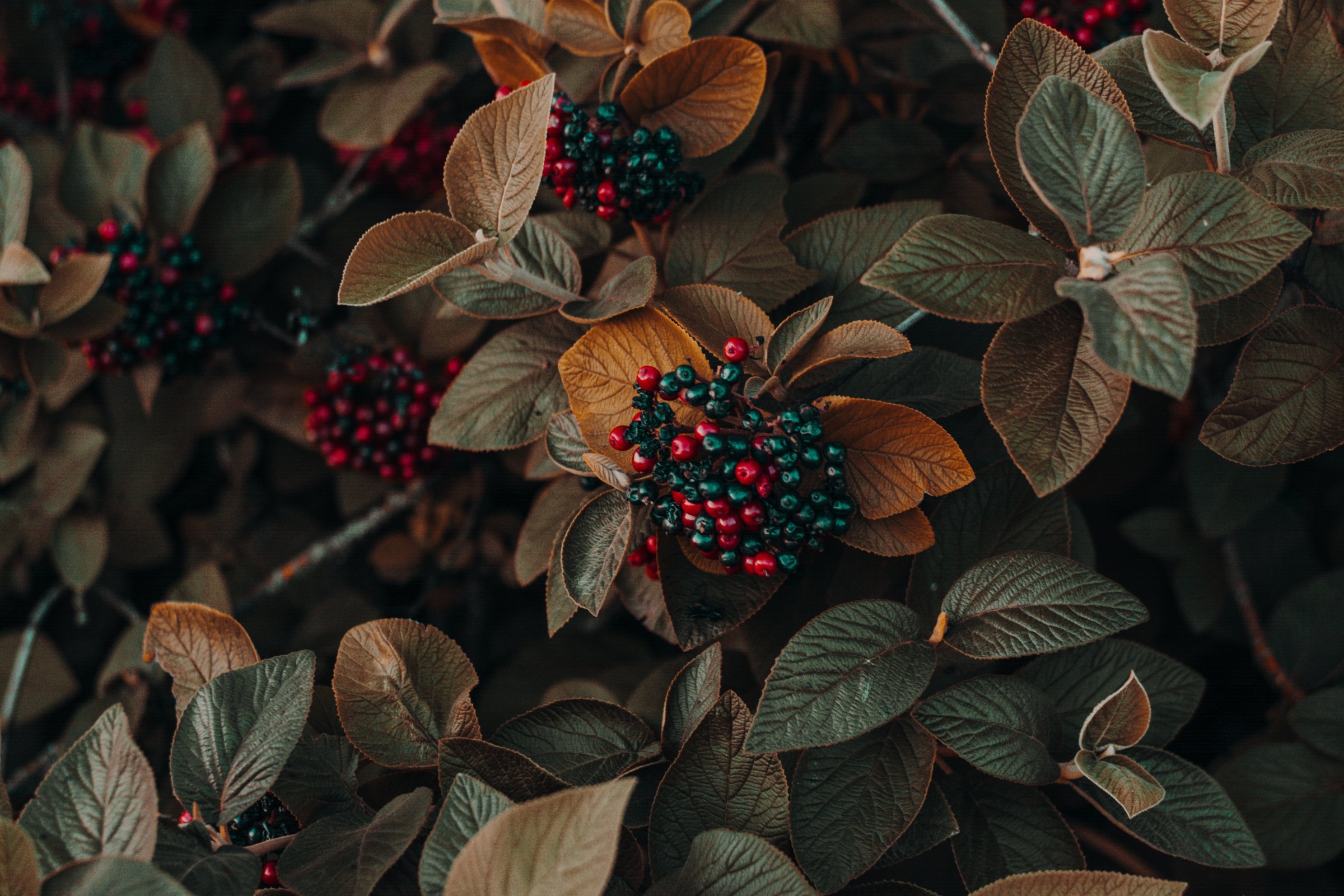
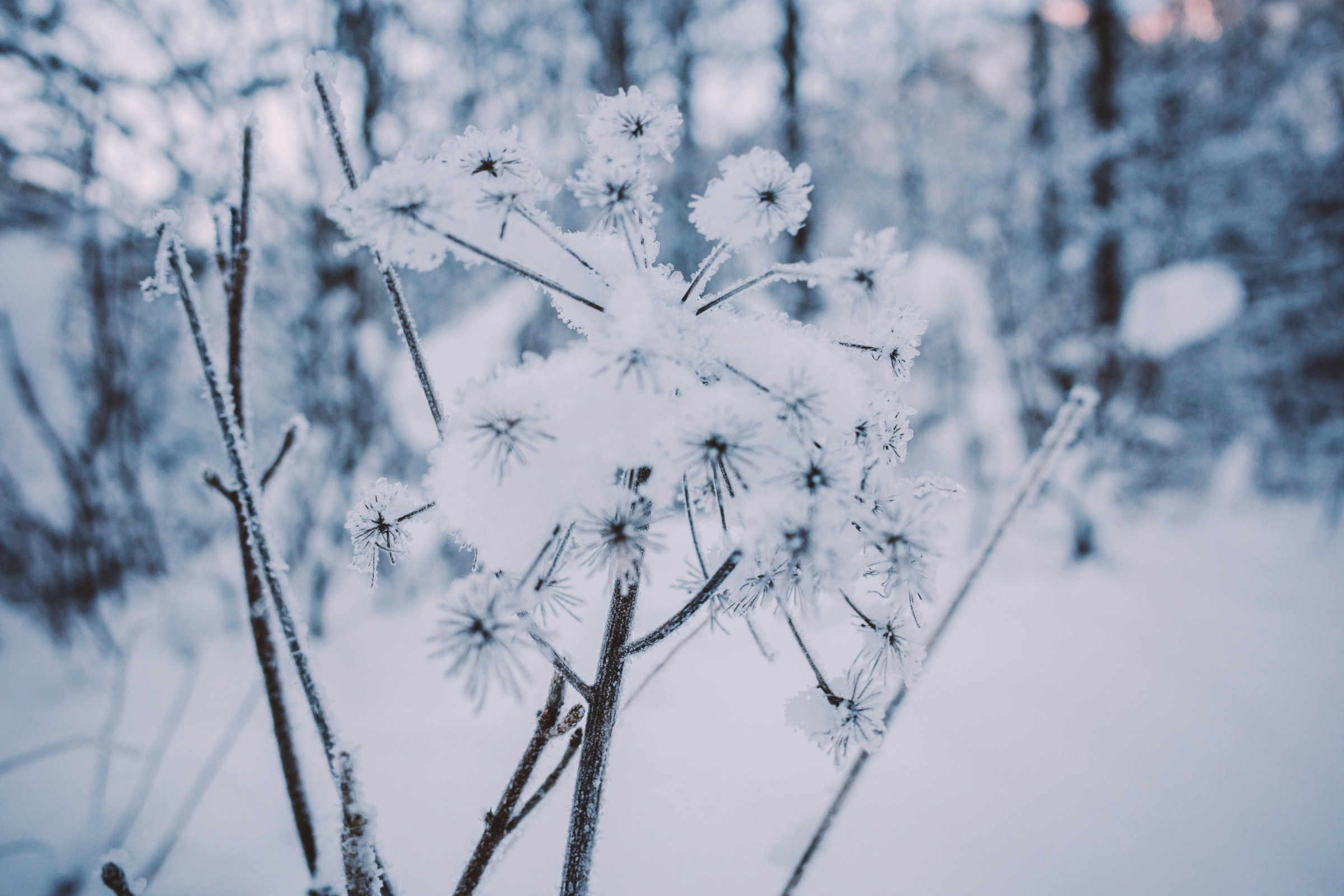
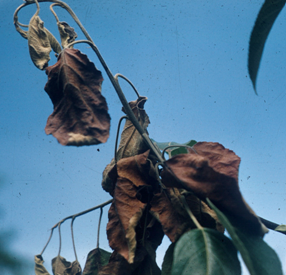 Fire Blight
Fire Blight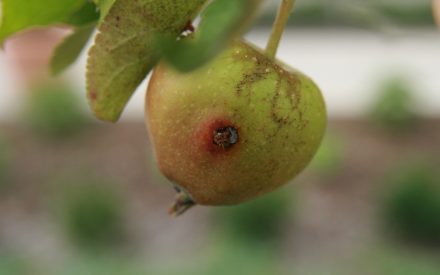 Apple Pest Management for Home Gardeners
Apple Pest Management for Home Gardeners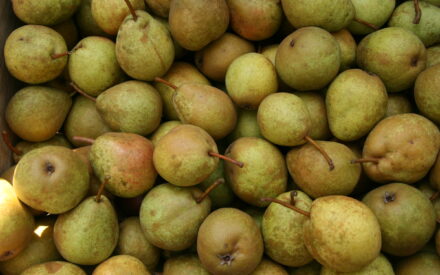 Growing Pears in Wisconsin
Growing Pears in Wisconsin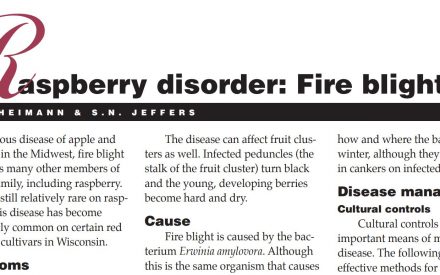 Raspberry Disorder: Fire Blight
Raspberry Disorder: Fire Blight


